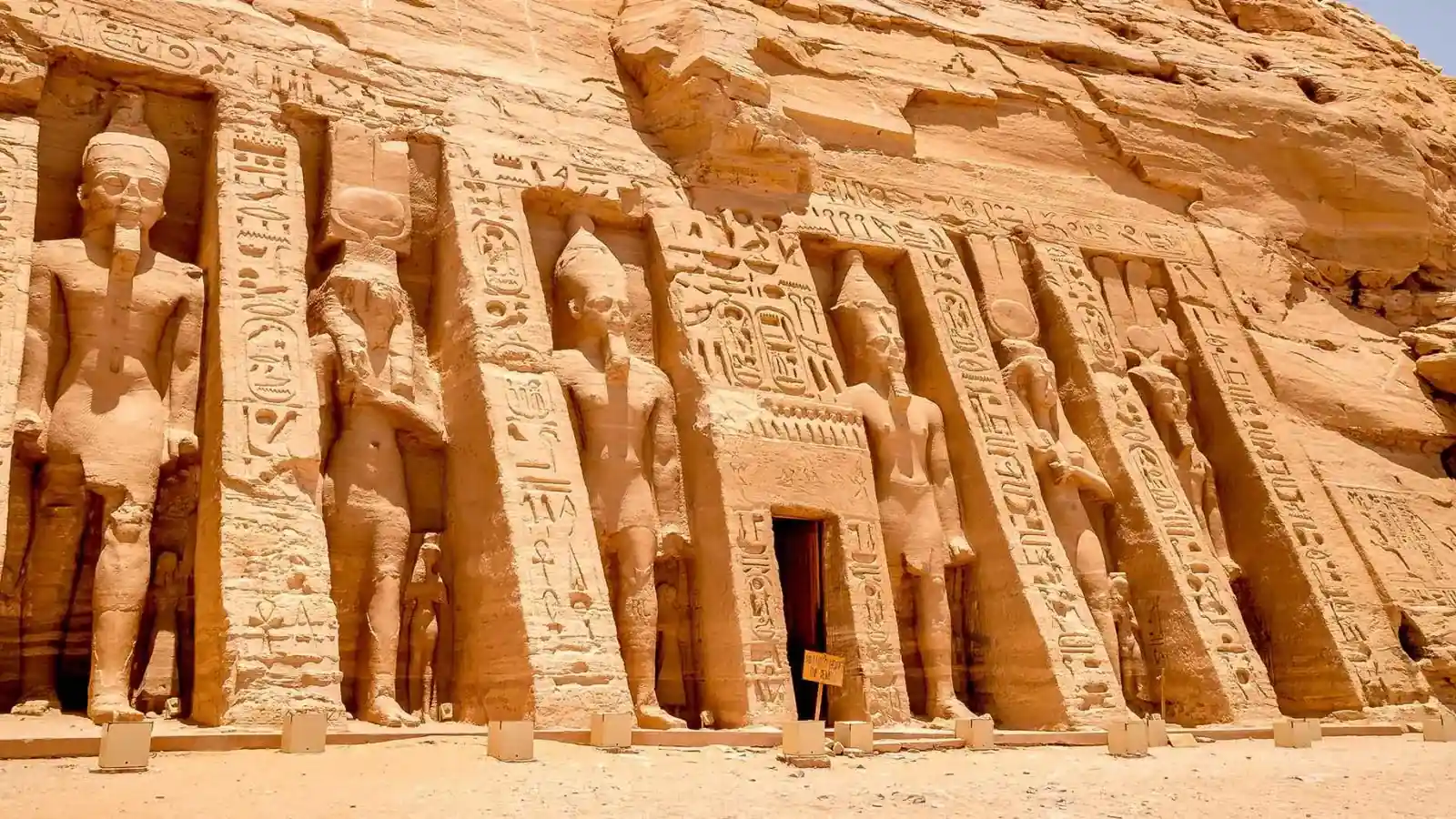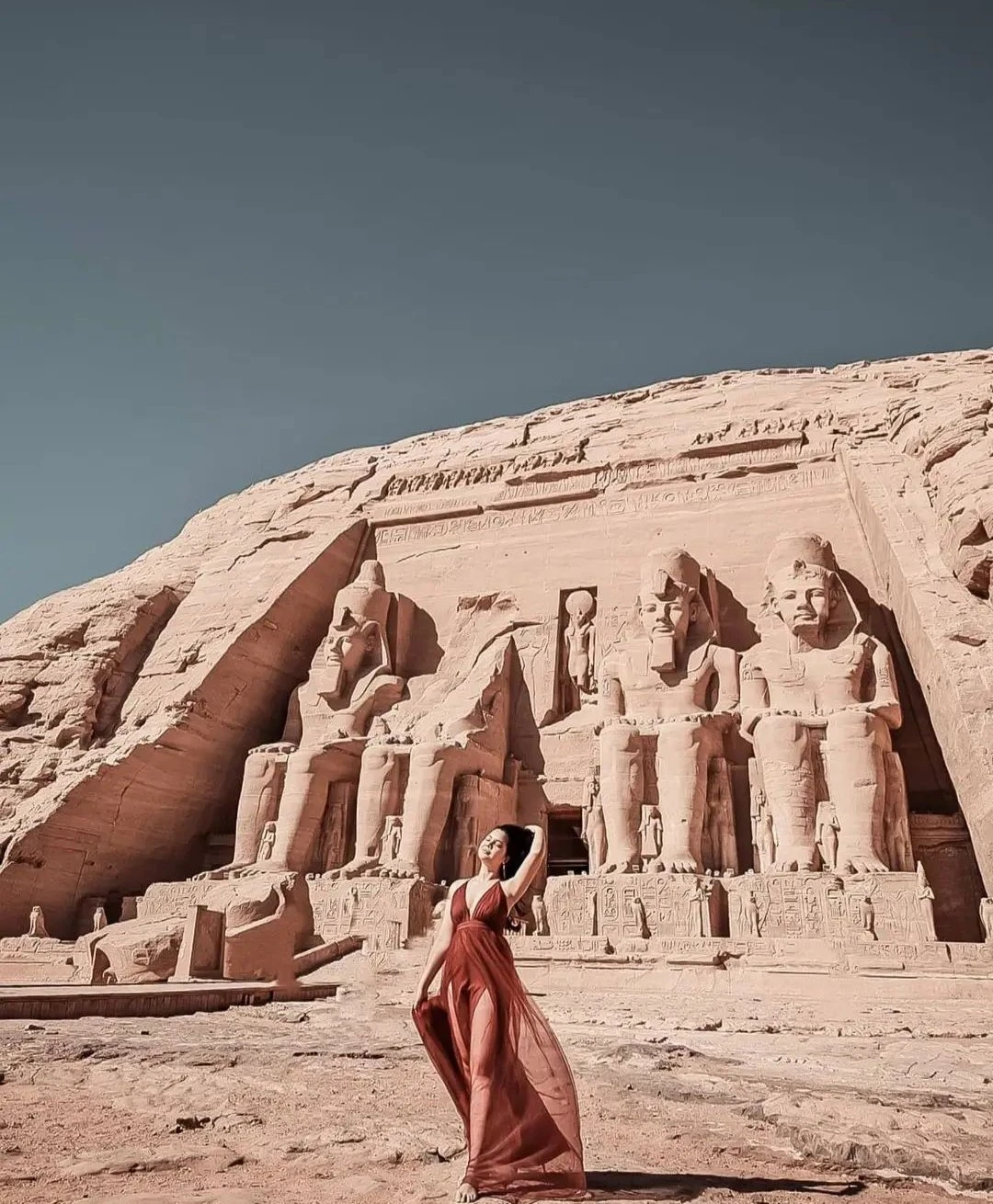If there's one temple in Egypt that leaves travelers speechless, it’s Abu Simbel Temples. Located in the southern reaches of Egypt near the Sudanese border, this ancient marvel is more than just a temple—it’s an extraordinary story of history.


Post Introduction
If there's one temple in Egypt that leaves travelers speechless, it’s Abu Simbel Temples. Located in the southern reaches of Egypt near the Sudanese border, this ancient marvel is more than just a temple—it’s an extraordinary story of history.
Post Content
In the heart of southern Egypt, near the Sudanese border, the Abu Simbel Temples stand as a monumental testament to the power, grandeur, and artistic brilliance of ancient Egyptian civilization. Carved directly into the cliffs of Nubia during the reign of Pharaoh Ramses II in the 13th century BCE, the twin temples of Abu Simbel were designed not only to impress but also to intimidate. The larger of the two temples is dedicated to Ramses II himself, while the smaller one honors his beloved queen, Nefertari. Together, they form one of Egypt’s most iconic and awe-inspiring archaeological wonders.
What makes the Abu Simbel Temples truly exceptional, beyond their artistic and historical significance, is the monumental relocation project carried out in the 1960s. As part of the international effort to save Nubian monuments from the rising waters of Lake Nasser following the construction of the Aswan High Dam, the entire complex was dismantled and rebuilt 65 meters higher and 200 meters back from its original location. This engineering feat, sponsored by UNESCO, preserved one of humanity’s most treasured sites for future generations.
🔹Ready to experience Egypt like never before? Discover our 7 Days itinerary Pyramids of Giza & Nile Cruise
and turn your dream vacation into reality!
.webp)
The Abu Simbel Temples were commissioned by Ramses II, one of ancient Egypt’s most powerful and long-reigning pharaohs. Known for his military exploits and architectural ambition, Ramses sought to project his might and divinity by carving his likeness into colossal rock statues. Completed around 1265 BCE, the Great Temple features four colossal seated statues of Ramses II at its façade, each towering over 20 meters in height. These statues flank the entrance and are meant to display the pharaoh's god-like power to all who approached from the south, especially potential invaders from Nubia.
Adjacent to the Great Temple is the smaller yet equally striking Temple of Hathor and Temple of Hatshepsut. This was one of the few temples in ancient Egypt where a queen received equal prominence with the pharaoh. The façade features six standing statues—four of Ramses and two of Nefertari—each about 10 meters tall. Inside, the temple walls are richly adorned with scenes showing the queen making offerings to the goddess Hathor.
🔹Want to dive deeper into Egypt’s wonders? Check out our latest blog on The Valley of the Kings.
The design of the Abu Simbel Temples is a marvel of ancient engineering and religious symbolism. The Great Temple is aligned so that on two specific days of the year—February 22 and October 22—the sun’s rays penetrate the temple's inner sanctuary, illuminating the statues of the gods seated within. This solar phenomenon highlights the significance of Ramses' birthday and coronation day, reinforcing his divine connection.
The interior halls of the temples are filled with intricate bas-reliefs and hieroglyphic inscriptions. Scenes depict Ramses II’s victories in battle, particularly the famous Battle of Kadesh, and his interactions with the gods Amun, Ra-Horakhty, and Ptah. The craftsmanship on the walls demonstrates the artistic mastery of ancient Egyptian artisans and provides invaluable insights into the religious and political ideology of the time.
In the 1960s, the construction of The High Dam of Egypt created Lake Nasser, one of the largest man-made lakes in the world. This posed a major threat to the ancient Nubian monuments, including the Abu Simbel Temples, which were at risk of being submerged forever.
Between 1964 and 1968, a massive international campaign led by UNESCO successfully saved the temples. The structures were carefully cut into blocks, transported, and reassembled at a new site 65 meters higher than their original location. This effort not only preserved the temples but also set a precedent for international cooperation in cultural heritage preservation. Today, a visitor standing at Abu Simbel would never guess the temples had ever been moved.

Today, the Abu Simbel Temples are one of Egypt’s top tourist destinations. Thousands of visitors journey to this remote region every year to witness the grandeur of Ramses II and the beauty of ancient Nubian architecture. The temples are particularly popular during the Sun Festival, when the solar alignment draws crowds at sunrise to witness the sacred illumination inside the Great Temple.
The Abu Simbel Temples have become symbols not only of ancient Egyptian civilization but also of the global effort to preserve cultural heritage. The story of their relocation is taught in archaeology and engineering schools around the world and remains a point of national pride for Egypt.
Abu Simbel is located about 280 kilometers southwest of Aswan. Most travelers reach the site by plane or organized tour buses. Flights operate daily from Cairo and Aswan, while road trips offer a scenic route through the Nubian desert.
The best time to visit the Abu Simbel Temples is from October to April when the weather is cooler. For a truly unique experience, time your visit with the Sun Festival on February 22 or October 22.
The Great Temple Faces the Sunrise
The orientation of the temple is so precise that the sun reaches the innermost sanctuary only twice a year.
Over 3,000 Workers Helped Relocate It
The relocation project employed engineers, archaeologists, and laborers from all over the world.
A UNESCO World Heritage Site
Abu Simbel is part of the “Nubian Monuments” World Heritage designation.
Not the Original Location
The current site is entirely man-made, built to mimic the original cliff face.
Why were the Abu Simbel Temples built?
Ramses II built them to demonstrate his divine power and assert dominance over Nubia.
How old are the Abu Simbel Temples?
They date back over 3,200 years, to around 1265 BCE.
What makes the temples unique?
Their scale, solar alignment, and successful relocation make them unparalleled in the world.
Can I visit the Abu Simbel Temples?
Yes, they are open to the public year-round and accessible by plane or road from Aswan.
What is the Abu Simbel Sun Festival?
A biannual event where the sun aligns perfectly with the temple’s inner sanctuary, illuminating the statues inside.
Abu Simbel Temples isn’t just another temple—it’s a masterpiece of ancient art, engineering, and devotion. From its enormous statues to its intricate carvings and incredible relocation story, there’s no wonder why it’s a UNESCO World Heritage Site and one of Egypt’s top attractions.
Whether you’re a history buff, an architecture enthusiast, or simply someone who loves to explore unique destinations, Abu Simbel Temples should be at the top of your travel list. Trust me—standing before those massive statues of Ramses II is an experience you’ll never forget.